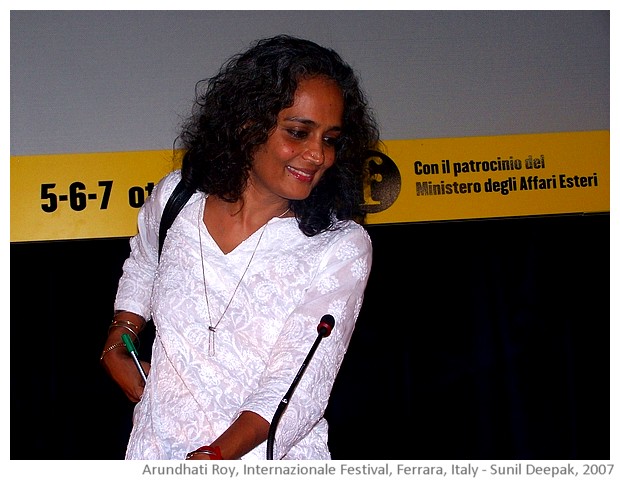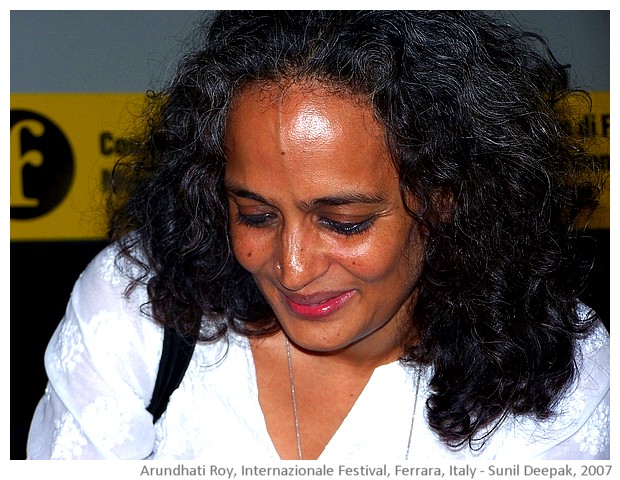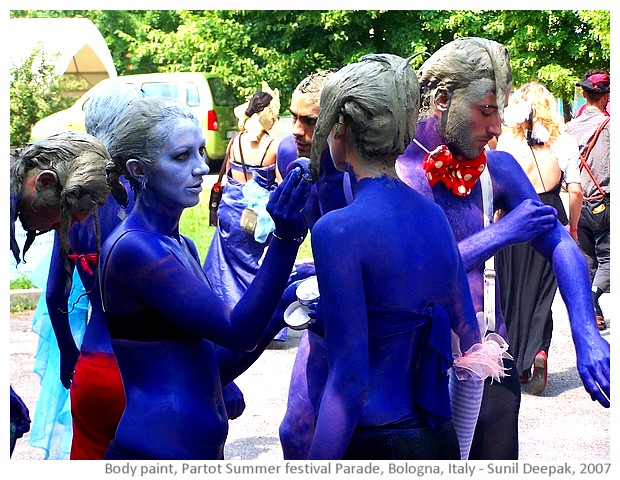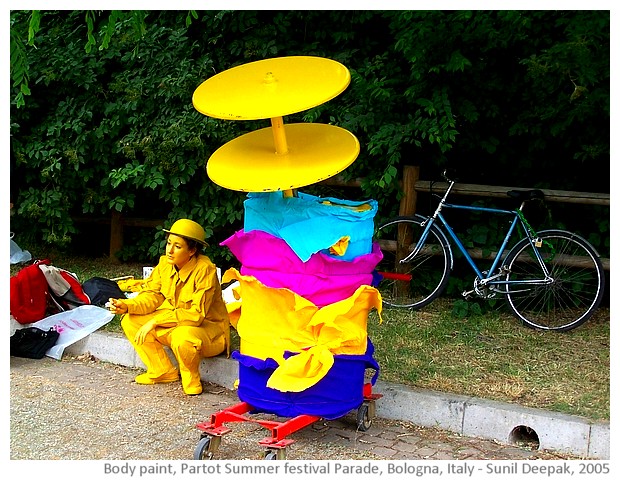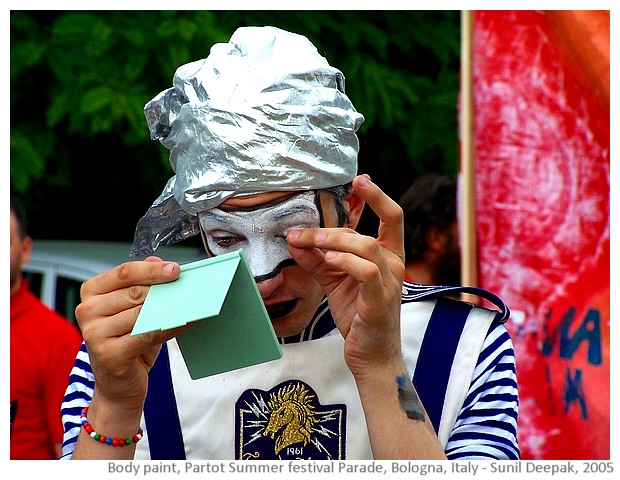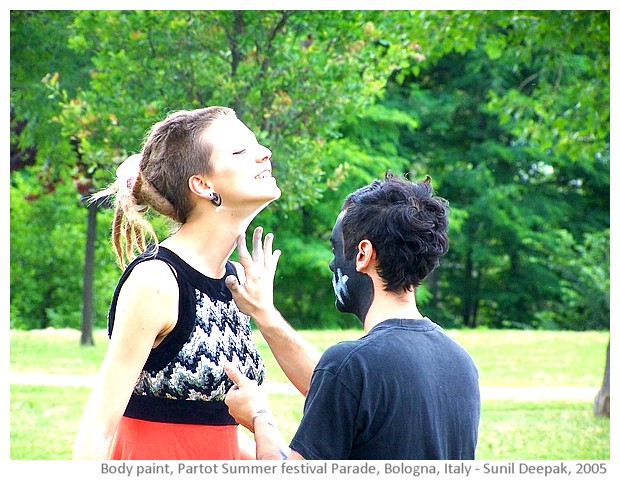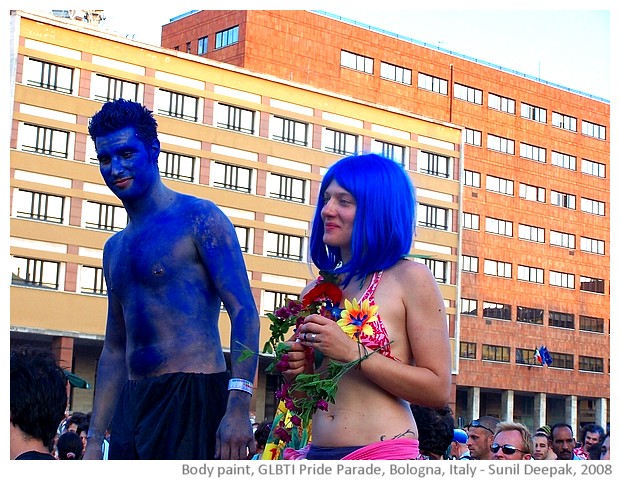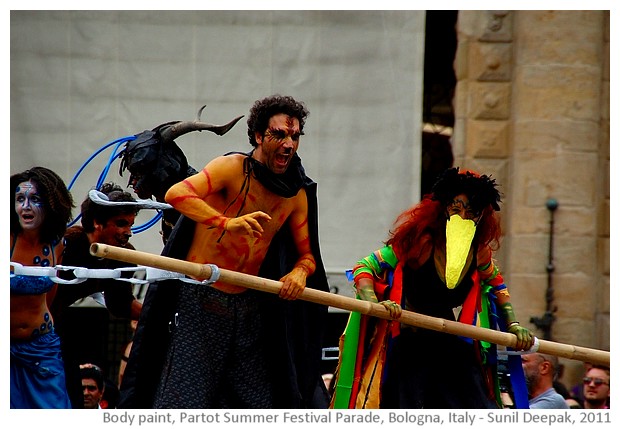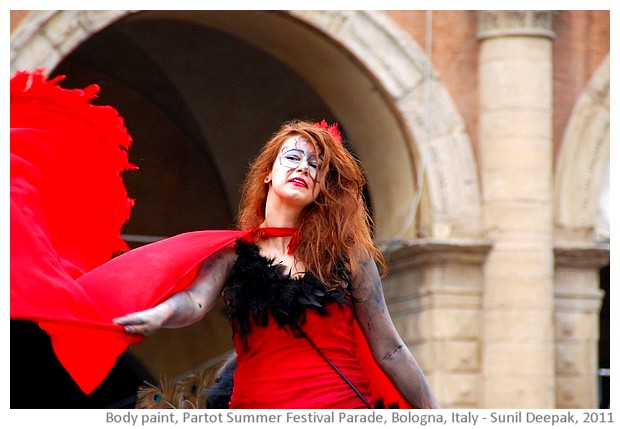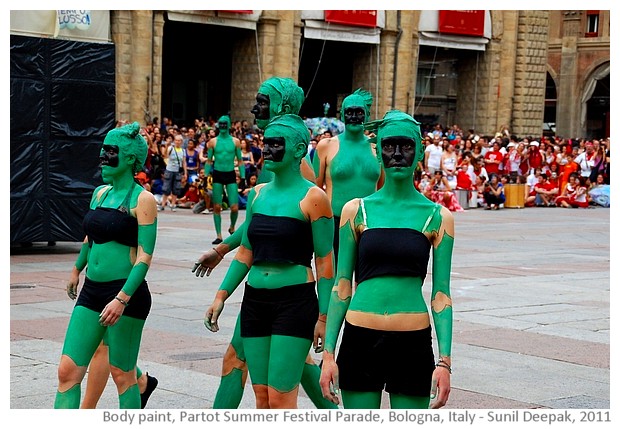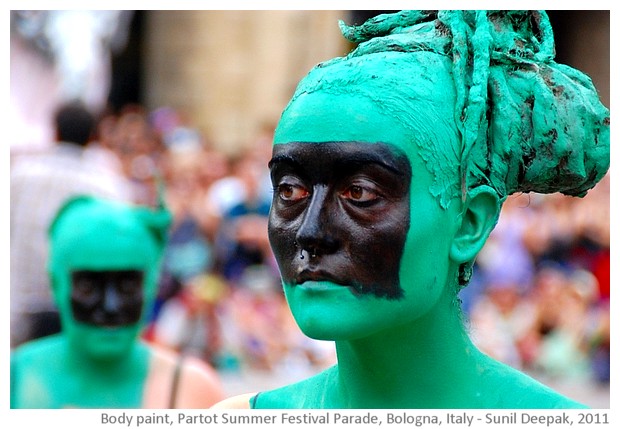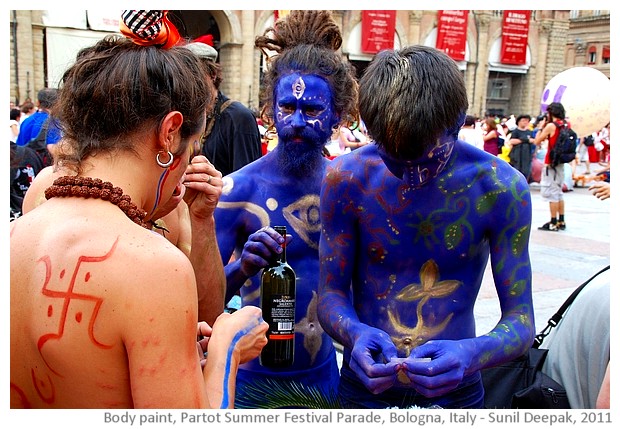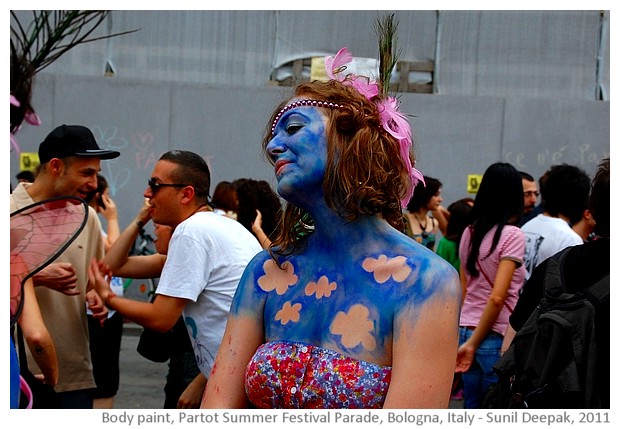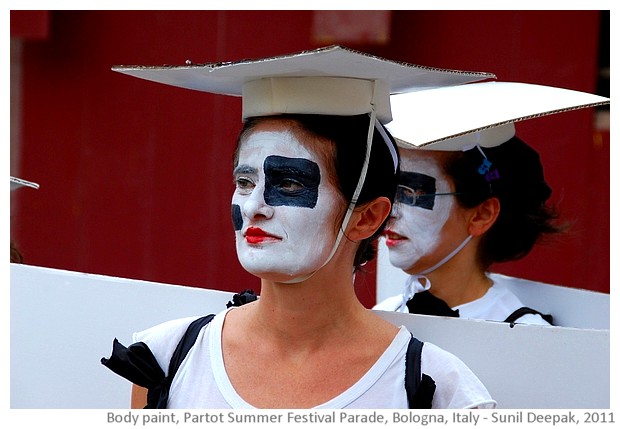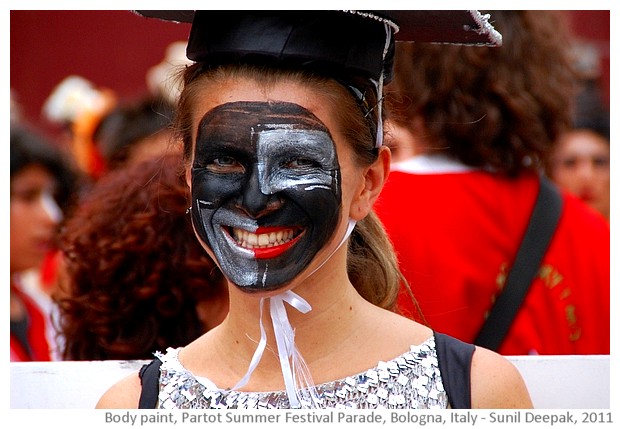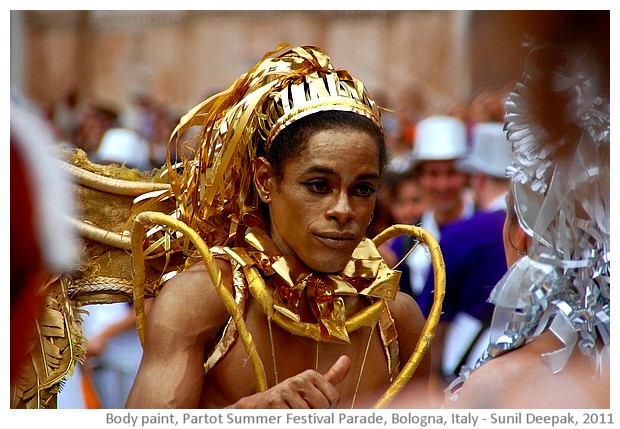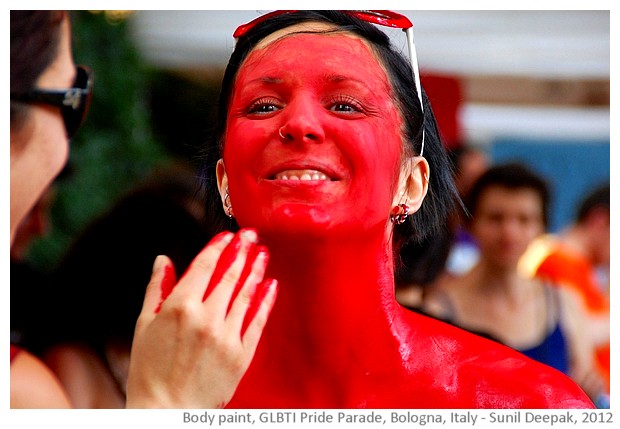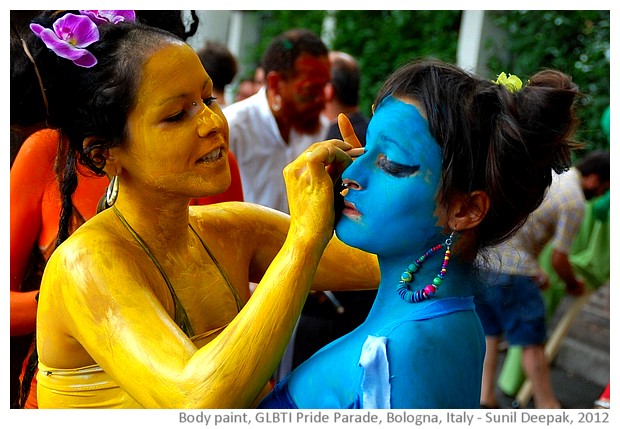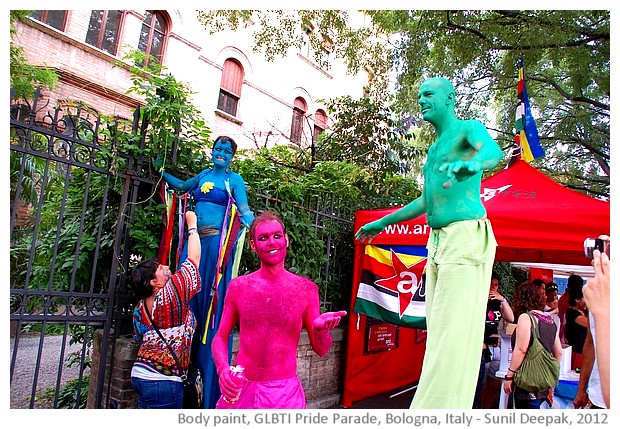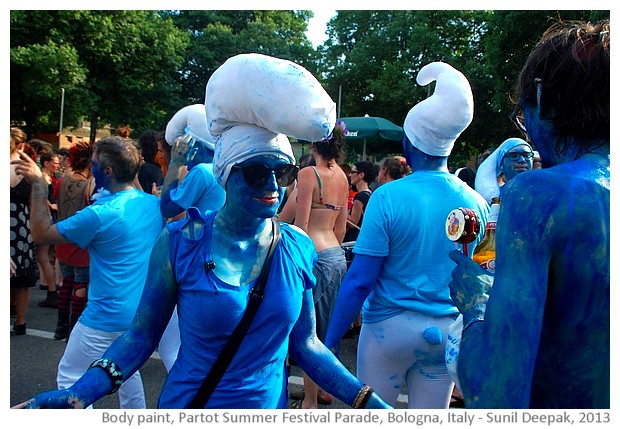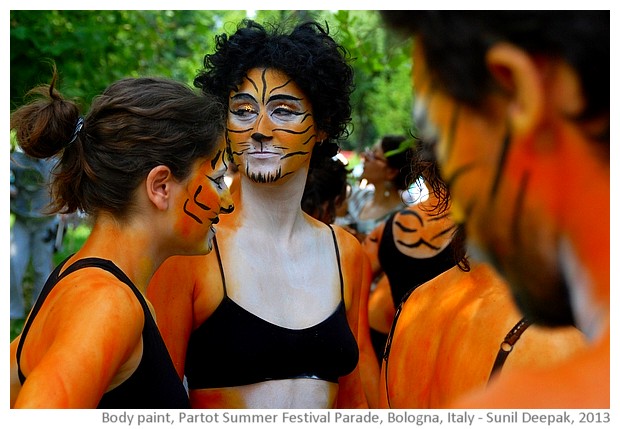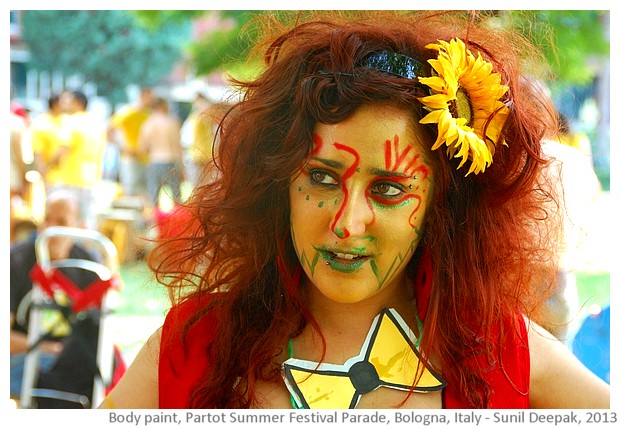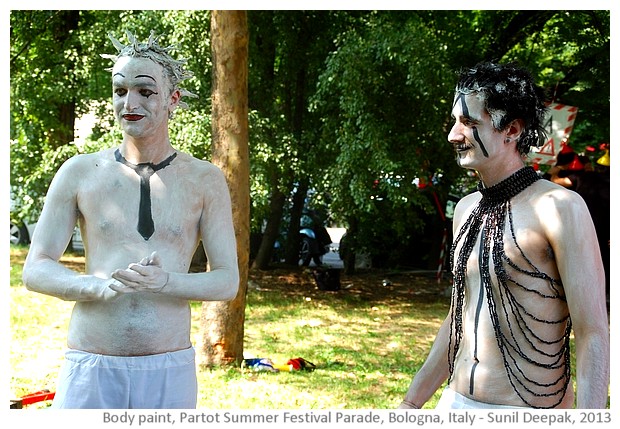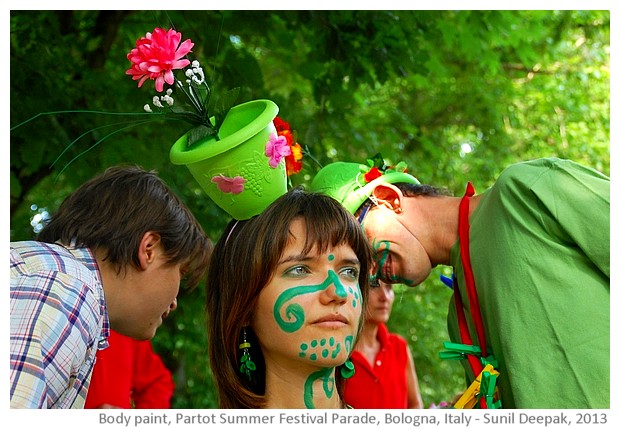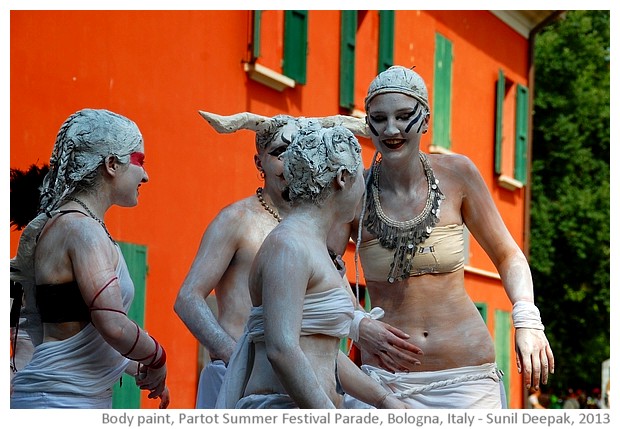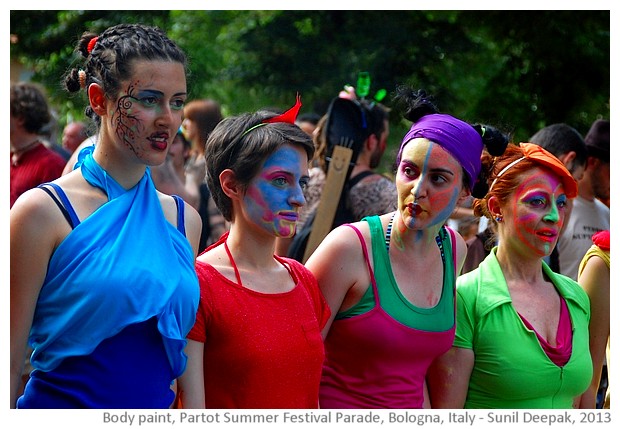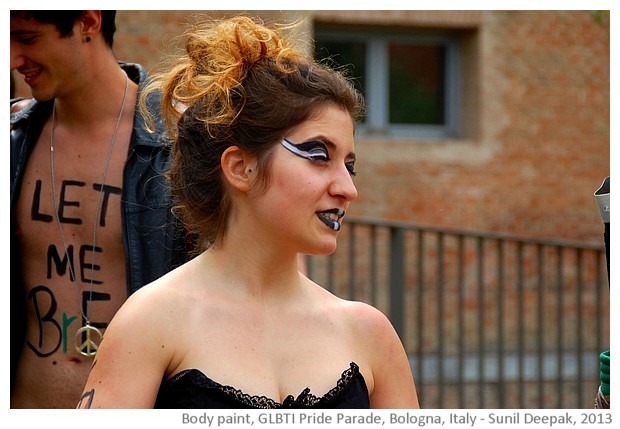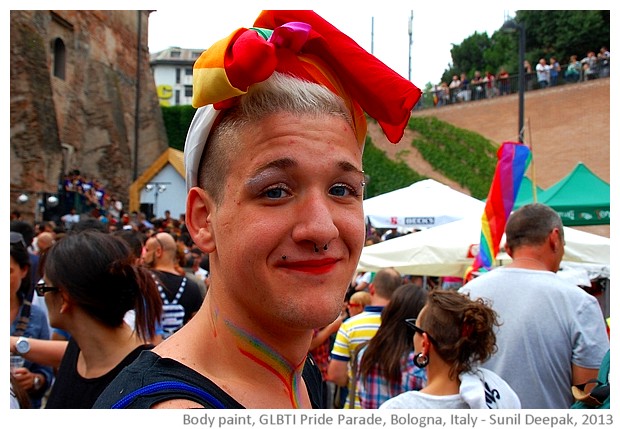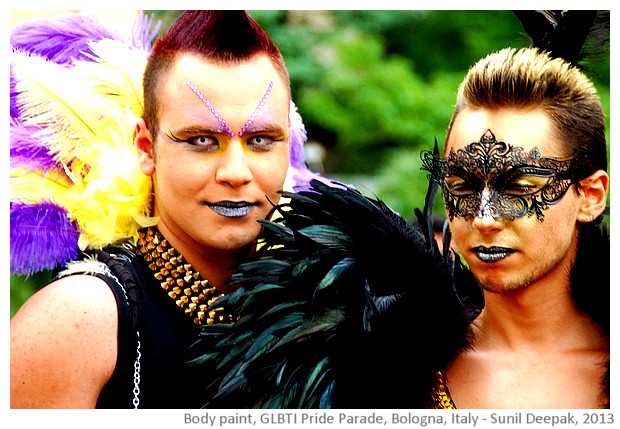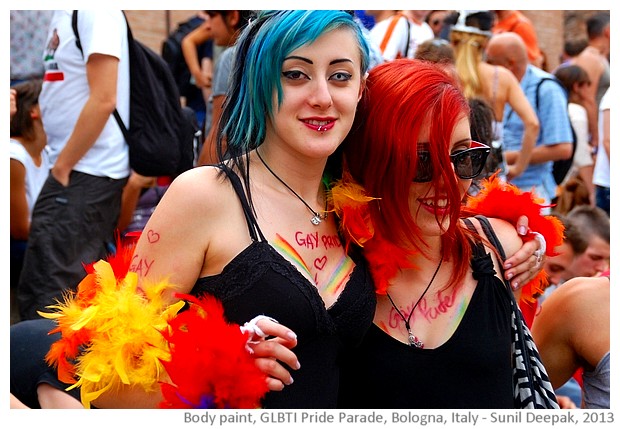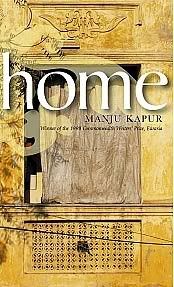Italian weekly magazine
Internazionale had organised three days of meetings with journalists and writers from different countries. I had written about this experiences a couple of days ago in under "
Word Worlds". This time I am going to write a little more in detail, especially what Ms. Roy said.
Arundhati Roy spoke in the round table discussion on "
Literature, A world of stories: narrative and journalism" on Saturday 6 October. 2007. Other speakers at this round table were Efraim Medina Reyes (Colombia), Elif Shafak (Turkey) and Laila Lalami (Marocco) while the round table was coordinated by Italian journalist Goffredo Fofi.
Efraim, Laila and Elif spoke before Arundhati. Laila explained how American publishing houses have put her in the category of Muslim women writer from middle east and thus they expect her to write about how bad are the things for Muslim women in the middle east and they insist on putting pictures of veiled women, desert and camels on the covers of her books. (In the picture from left: Efraim, Elif, Laila, Arundhati and Goffredo).
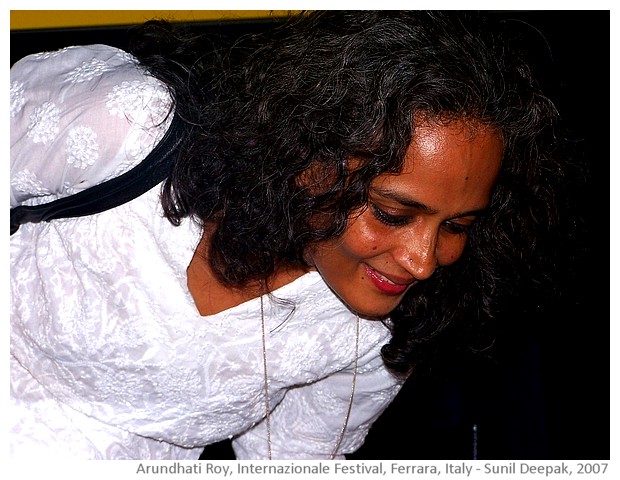
Elif also took this theme forward by saying that islamophobia in the western world means that their identities as writers are shaped very much by these perceptions of being a Muslim and being a woman. Explaining her own growing up in different countries and continents, she said that people ask her about her roots and she feels that her roots are up in the air, that she is an upside-down tree. She concluded by reiterating her need for deciding her own themes and not to be dictated by expectations of others, “If I wish to write about a Norwegian homosexual or anything else, I will do so, to be writer does not mean that I have to restrict myself only to write on lives of Turkish women.”
Now, we come to Arundhati’s speech, but before that just a little introduction. I have long been an admirer of Ms. Roy. When I first borrowed
God of the Small Things from the library in Bologna, it had already become famous as the Booker award winner. Still I couldn’t go through it. After an initial fifty pages I had given it back, unread. I had thought that her language was wonderful but that it was just too slow for me.
Finally my sister convinced me to give that book another try and I found that it was indeed true. If you stick to that book just a little bit longer, it does grip you.
About the other writings of Arundhati, I liked them as well even if sometimes I felt that she was a little bit too shrill, and sometimes she made me little uneasy. Finally about some of her recent articles, like the one on the judiciary in India that came out in Outlook about 10 days ago, I could not finish reading, because I felt that she is so busy proving her point with relentless precision that her writing has become tedious to read.
A couple of years ago, I had met her on the stairs of the business lounge at the Delhi airport. I was going down to my flight and she had just arrived. “
Excuse me, are you Arundhati Roy?” I had asked her on the stairs and when she had nodded, I had asked to shake her hand and ask her for a quick picture. She had said yes and after the picture, I had run off to catch my flight.
Only when I was down in the queue for getting in the flight, I had remembered the guy with her and my rudeness. I had not even looked at him, nor said a hello to him or to ask him to be in the picture! I am sure that it must be terrible to have a famous husband or wife, so that people just ignore you, or worst, they push you away while they talk to the famous spouse. I regretted this rudeness even more after a couple of years when I found out that the guy,
Pradeep Krishen had written a lovely book about trees. I love trees as well, I love learning about them and talking about them.
Ok, now to come to the
speech of Ms. Roy. Here are the main points:
“I understand this feeling of being .. I have a joke about it, when I read these books, I say, here is another book by CMM. CMM stands for Corporatised Moderate Muslim, it is what makes the west feel good in its interaction with the Islamic world.
I am not so sure about the space between fiction and the other kind of my writing, but none of my writing fiction or non fiction is something that comes out as a policy decision. When I had written God of the Small Things it was in 1997 and then came the booker, that was a period when we were beginning a journey in India, the Hindu nationalist right wing had come in the Government, in 1998 there was the nuclear test that was celebrated with a kind of sexual orgy of pride … at that time I was the darling of the middle classes, that I had made India proud. I saw that I had a platform, a space to raise a voice of dissent. I knew that to say something will be political, without being political I can’t say anything still to allow them to go on was something terrible for me and so I write “End of Imagination”, it was my dissent. Then suddenly we came to a world where there was so much horror… there was the Supreme court judgement about Narmada river, I travelled and saw the level of displacement and destruction that would happen. I felt that it was a story that needed a writer. There were other reports, facts and figures but how they were said did not allow for any common understanding so it was important to say this story in a way that people can understand the extent of horror..
One thing then led to another.. corporatisation, globalisation were coming in. I could see that it is going to unleash a level of violence in India that would require a battle in which writers, film makers, artists had a role to play, to fashion the elements and to explain them to people. When we were fighting for independence we did not need to explain it to people, they understood it clearly and easily. There was this coloniser and he was the bad guy. We were fighting against them. But today what is happening, how can you fight a battle when you don’t know who the enemy is? How can you fight shadows?
That is how I began into that other kind of writing.
All of us have written many times about the role of corporatisation in the media and the impact this is having on journalism but I don’t think I need to go into that with this audience. But I feel that the same thing is happening also with literature. There are huge book store chains that are deciding what kind of books will sell and they are then telling the publishing houses about the kind of books they want, what kind of covers these books should have.
When I am invited to a place, to a meeting like this I feel that I have been invited to tell you about how terrible things are in India. They are terrible but let me tell you that we never had a prime minister who owned all the media and all the book stores.. (like you had here).
When I am put into jail, my body is picked and put into the jail and I know that I am in jail but sometimes there are mind prisons also where imagination has been captured and colonised. Everything you wear is decided by some designer one season earlier. You walk past a shop window and you say ‘what a nice colour’ but the script for this choice was already written and planned in the last season, what you will think of a nice colour was decided and scripted earlier.
Along with corporatisation of media, there is corporatisation of literature as well.
There was two things that we need to talk about. One is language and the other is knowledge.
When I finished God of Small Things, I will tell this anecdote, I was on a review programme on the BBC and there were these two other persons, two British historians, on the programme with me. I hadn’t really spent much time in the west before, so I was there listening to these two men, and I couldn’t speak much because these two men were literally justifying the British Empire and I was like…even the right wing in India does not do that and they were justifying colonialism. I felt like I was a Martian come from outer space listening to them and they were saying that British culture was the defining culture of the world, Shakespeare and all. I was new to these things, I hadn’t had much interaction in such debates and they had accents.. so I didn’t know how to deal with it and I didn’t say anything. And then one of them said about me that because your book is written in English that is also a tribute to the British empire. So I said look that is like telling to children of raped parents that they are a tribute to the brutality of their fathers.
When I was growing up, I grew up where we speak Malyalam but I was forced to speak English by my own mother. I had to write ‘I will speak in English, I will speak in English..” a thousand times if I was caught speaking Malyalam by my mother. She said that this is the language that is going to get you where ever you are going to get.
So I said to that person, look it is not my tragedy is not that I hate English, I love the language but I am going to use it against you where ever I can .. and this person was almost crying, he said that he had said it as a compliment. I said that that is the trouble, you crushed a whole civilisation and did not even hear the crunch, did not hear the sound of its breaking.
Language … like in India we have 18 languages and 3000 dialects. For a persons like me,.. my father is a Bengali and my mother is from south, from east Malyalam. I was born in Assam and I speak Assamese. I studied in Tamilnadu and I speak Tamil. My first husband was from Goa and I learned to speak some Konkani, and now Punjabi and so on. So what is my language? What do we mean when we are talking about language of the empires. If I write in Hindi, it will be language of the upper castes, the language of Aryans who came and conquered the indigenous people who were there. So the way I look at it is to to see what do I say in that language. What do you say in it, how do you use the language. After all a writer should not be used by the language,.. uses language. If we are talking about empires and oppression then we can go back a long way and I don’t think that we can get to the end of that journey.
The other thing I want to talk about briefly is knowledge. Today the major form of capitalism is knowledge, accumulation of knowledge is capitalism. It is what the World Bank trades in. It employs the maximum number of people to do the manipulation of knowledge, that is its real talent. Accumulation of knowledge is capitalism and it is used to oppress people.
A few years ago I had been talking about globalisation of dissent, I was talking of globalisation of resistance… I was writing with facts, figures, equipped with every kind of argument. I thought that arguments, arguing well and pushing them in a manhole (??) arguing about gender, about globalisation .. but now I have also listened to the ground, I have travelled, I have travelled to those places where resistance is taking place and I have started to feel exactly the opposite. I feel that we have been burdened by so much information that we have weakened people by all the knowledge that we want to accumulate. If we look at a resistance movement in India that had all the knowledge, that had all the arguments, that had the support all kinds of international NGOs and movements, that had the publicity and notice two things – persons are saying that I don’t want your arguments, I don’t want your publicity and media, I don’t want to go to international conferences and making projects.. I am just going to stop you from coming in here, I will die before I let you inside this space.. and some of them were able to defeat them .. I am not saying that people should go back to being local and insulated once again, but what I feel that accumulation of knowledge that ends up in NGOs and Social Forums .. every institution that we have created has been taken over by them. We need to think about being guerrilla fighters on the subject of knowledge. We need to know that even knowledge can detract.
I certainly feel that as a writer of fiction who has started to write non fiction – though some critics say that my non fiction is also fiction, but that’s another things – but I feel that I don’t need to put it all right, to argue it right, to prove the case. I feel that can also become a prison and there are other ways of fighting. Thank you.”
This transcript is from my ipod, but I was not sitting very close to the loudspeaker and there were sounds of other people sitting around me and lot of applause in between, so I missed bits and pieces of her speech. As you can see, she did talk about being too obsessed with facts, figures and al the possible arguments to prove her point and that she has decided that this way of writing can be a prison as well. I look forward to reading something more concise and less tedious from her.
There was another shorter speech from her as an answer to some questions, that I still need to transcribe. In this pseech she mentioned that she was "not writing non fiction right now", that can be interpreted to mean that she is writing fiction. That is certainly another good news.
In terms of her arguments about the language, I agree that in the language issue, it is perhaps more important what you say than the language you say it in. If she spoke in Kannada or Malyalam, probably I will not even know about her. Yet, there is another dimension of English versus other languages debates that is linked to power hierarchy. English is the language of people who can speak, who are articulate, and who have the power. If Ms. Roy was not speaking in English, no one would have invited her to speak. It is true that a rare Mahashweta Devi can get invited to speak in an international meeting but compared to writers writing in English, she is virtually unknown not just outside India, but to majority of persons in India itself.
After reading her writings, I had somehow the expectation of very precise way of speaking, and I was a little surprised by her hesitancy, by her search for words, by parts that were obviously heavy with emotions. But it was a wonderful experience. And listening to all the applause to her words, made me swell my chest with "she is a fellow-indian" kind of pride that made me feel a little ashamed.
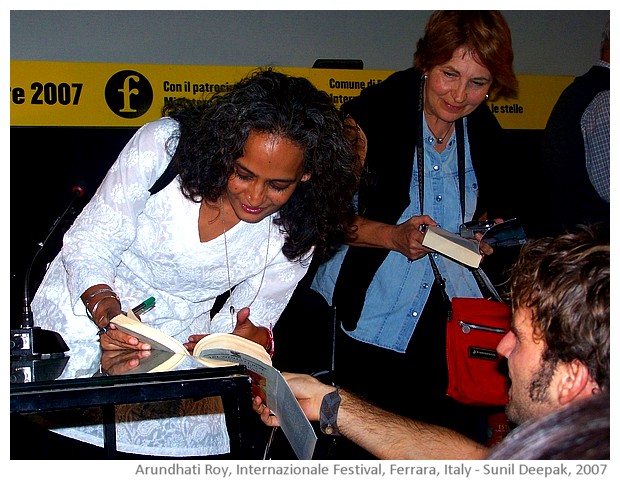
***






